
Unic was a French manufacturer founded in 1905, and active as an automobile producer until July 1938. After this the company continued to produce commercial vehicles, retaining its independence for a further fourteen years before being purchased in 1952 by Henri Pigozzi, who was keen to develop Unic as a commercial vehicle arm of the then flourishing Simca business.
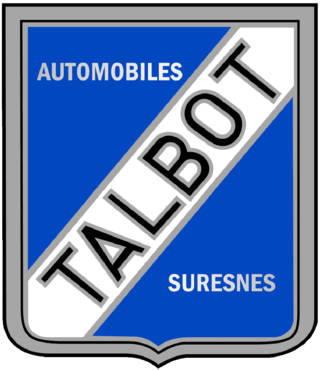
Talbot-Lago was a French automobile manufacturer based in Suresnes, Hauts de Seine, outside Paris. The company was owned and managed by Antonio Lago, an Italian engineer that acquired rights to the Talbot brand name after the demise of Darracq London's subsidiary Automobiles Talbot France in 1936.
Berliet was a French manufacturer of automobiles, buses, trucks and military vehicles among other vehicles based in Vénissieux, outside of Lyon, France. Founded in 1899, and apart from a five-year period from 1944 to 1949 when it was put into 'administration sequestre' it was in private ownership until 1967 when it then became part of Citroën, and subsequently acquired by Renault in 1974 and merged with Saviem into a new Renault Trucks company in 1978. The Berliet marque was phased out by 1980.

Rochet-Schneider was a French company, based in Lyons, that produced automobiles between 1894 and 1932. The Rochet-Schneider sales slogan was "strength, simplicity and silence".

Corre La Licorne was a French car maker founded 1901 in Levallois-Perret, at the north-western edge of central Paris, by Jean-Marie Corre. Cars were produced until 1947.
The Renault Suprastella is a large car that was introduced by Renault in the Spring of 1938 as a replacement for the Renault Nervastella from which it inherited its mechanical elements and many other essential characteristics.

The Panhard et Levassor Dynamic is a large car introduced by the French auto-maker Panhard et Levassor as a replacement for the company’s CS model at the Paris Motor Show in October 1936.

The Talbot Lago-Record Type T26 was a large, six-cylinder executive car launched by the French Talbot company in 1946. In the context of the company's protracted financial collapse, the last T26s were probably those produced during 1953.

The Talbot Baby is a six-cylinder executive sporting car launched by the French Talbot company in 1936. The three standard body types offered were a "coach", a two-door four-seater "cabriolet" and a two-door two-seater "cabriolet". The Baby was one of the first new models to appear after the French part of the Anglo-French Sunbeam-Talbot-Darracq combine was purchased, in 1935, by auto-entrepreneur Tony Lago. Production slowed with the onset of war and had ended completely by mid-1942 when the manufacturer's Suresnes plant was converted for war production.
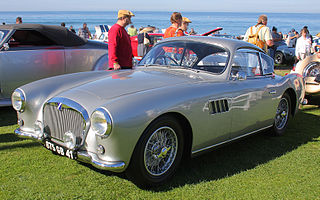
The Talbot-Lago Sport was a coupé-bodied sports car introduced by the manufacturer in May 1955. It was Talbot-Lago's last production model, and only 54 were built. After a couple of years the Talbot-designed engine was replaced with a BMW unit and the car was rebranded as the Talbot-Lago America.
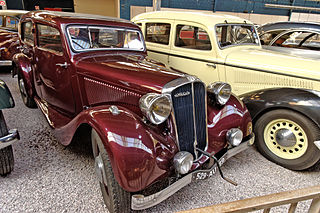
The Amilcar Pégase is a mid-sized car made between 1934 and 1937 by the French Amilcar company. The 2150 cc four-cylinder engine placed it in the 12CV car tax band. Other engine sizes, including a 2490 cc (14CV) unit developed in-house, were also listed.

The Delage D6 is a six-cylinder luxury car produced by the manufacturer between 1930 and 1940 and again, after the war, between 1946 and 1953. For much of this time it was the company’s principal or, from 1946, only model.

The Citroën B10 is an automobile produced by Citroën at André Citroën's factory in central Paris between 1924 and 1925.

The Nervastella is a large automobile constructed by Renault between 1930 and 1937. It was used as a state car and pictures of the president of the French Republic sitting in a Nervastella can therefore be seen in newsreels from the mid-1930s.
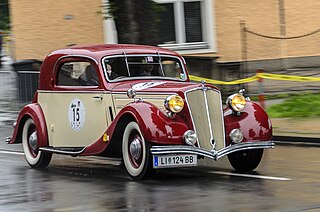
The Salmson S4 is a mid-size executive-level car introduced as the Salmson S4 C by Société des Moteurs Salmson in Autumn 1932. It was the manufacturer's principal and often sole model for the next twenty years.
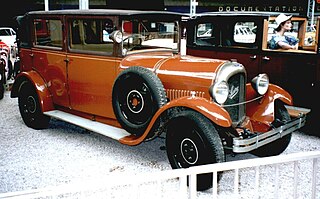
Automobiles J. Suère was a French manufacturer of automobiles between 1909 and 1931.
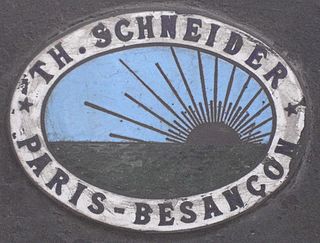
Th. Schneider was a French automobile manufacturer.
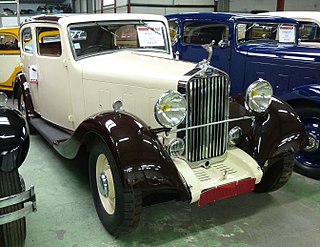
The Delage D4 was a 4-cylinder compact luxury car in the 8CV car tax band produced by the manufacturer between 1933 and 1934.

The Renault Vivasport was a 6-cylinder engined executive automobile introduced by Renault in September 1933 and produced till April 1935. A larger engined version was produced between December 1934 and February 1938. As with many Renaults during the 1930s, type changes as well as small often cosmetic facelifts and upgrades appeared frequently.

Automobiles Talbot France was the French subsidiary of British automotive manufacturer S.T.D. Motors Ltd., established in 1920 after the merger of British automakers A Darracq and Company, Clément-Talbot, and Sunbeam Company. Automobiles Talbot manufactured cars in Suresnes, near Paris.



















